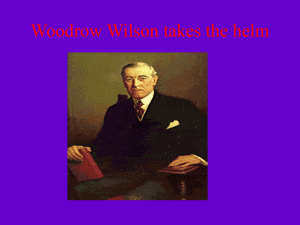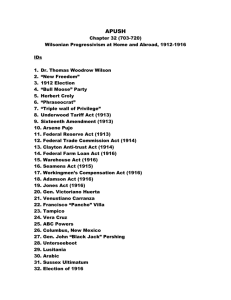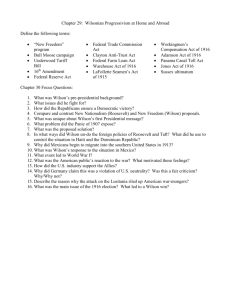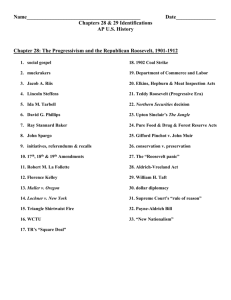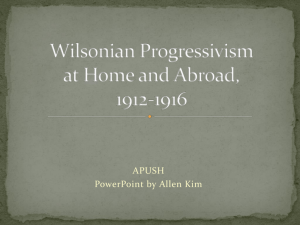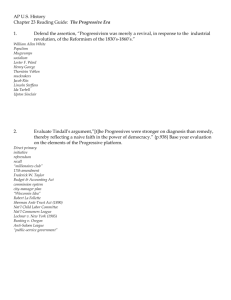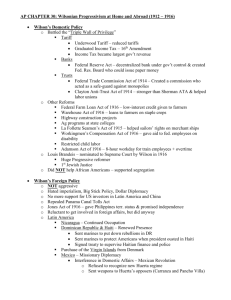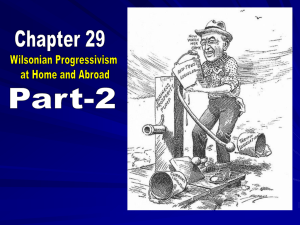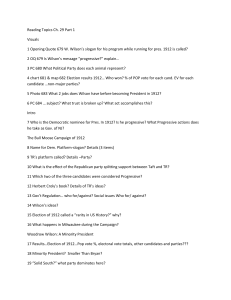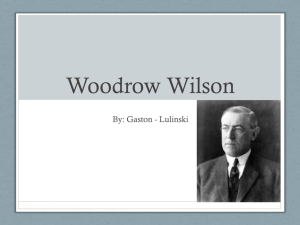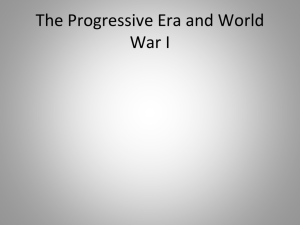Wilsonian Progressivism Study Guide 1913-1920
advertisement
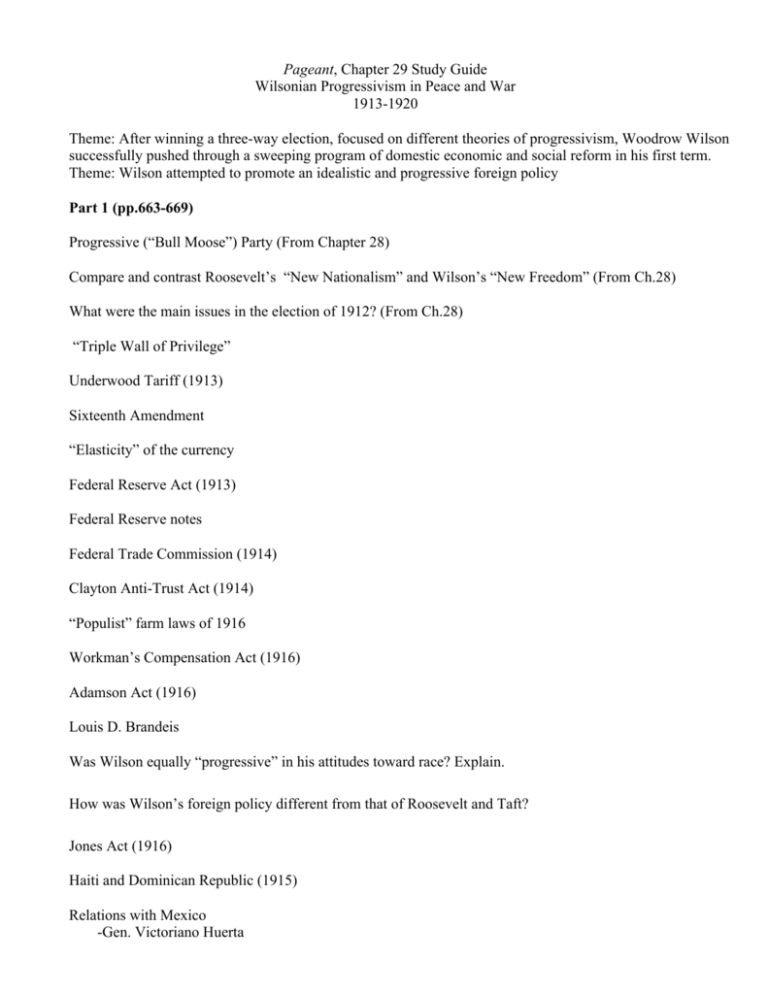
Pageant, Chapter 29 Study Guide Wilsonian Progressivism in Peace and War 1913-1920 Theme: After winning a three-way election, focused on different theories of progressivism, Woodrow Wilson successfully pushed through a sweeping program of domestic economic and social reform in his first term. Theme: Wilson attempted to promote an idealistic and progressive foreign policy Part 1 (pp.663-669) Progressive (“Bull Moose”) Party (From Chapter 28) Compare and contrast Roosevelt’s “New Nationalism” and Wilson’s “New Freedom” (From Ch.28) What were the main issues in the election of 1912? (From Ch.28) “Triple Wall of Privilege” Underwood Tariff (1913) Sixteenth Amendment “Elasticity” of the currency Federal Reserve Act (1913) Federal Reserve notes Federal Trade Commission (1914) Clayton Anti-Trust Act (1914) “Populist” farm laws of 1916 Workman’s Compensation Act (1916) Adamson Act (1916) Louis D. Brandeis Was Wilson equally “progressive” in his attitudes toward race? Explain. How was Wilson’s foreign policy different from that of Roosevelt and Taft? Jones Act (1916) Haiti and Dominican Republic (1915) Relations with Mexico -Gen. Victoriano Huerta -Venustiano Carranza -Tampico Incident -Francisco “Pancho” Villa (1916) -Gen. John “Black Jack” Pershing Part 2 (pp.669-685) Central Powers Allies Neutrality Proclamation (1914) Kaiser Wilhelm II Involvement of J.P. Morgan and Company British blockade of Germany Neutral rights U-boats “Lusitania” (1915) Sussex Pledge (1916) Election of 1916 -Candidates? Issues? Outcome? -“He kept us out of war.” Zimmermann Note What finally pushed the U.S. into war with Germany? “Making the world safe for democracy” Wilson’s Fourteen Points Committee on Public Information Espionage Act (1917) Schenck v. United States (1919) Mobilization for war -How? -War Industries Board Industrial Workers of the World Great Migration How did women finally achieve the right to vote? -19th Amendment (1920) Sheppard-Towner Maternity Act (1921) American Expeditionary Forces According to the authors, what was America’s main contributions to the war? Part 3 (pp.685-689) Henry Cabot Lodge The “Big Four” League of Nations Treaty of Versailles Irreconcilables Summarize the debate over the Treaty of Versailles. What ultimately led to the defeat of the treaty? The election of 1920 -Candidates? Issues? Outcome? How do the authors assess the role the U.S. played in the events that transpired in the post-World War I world?
